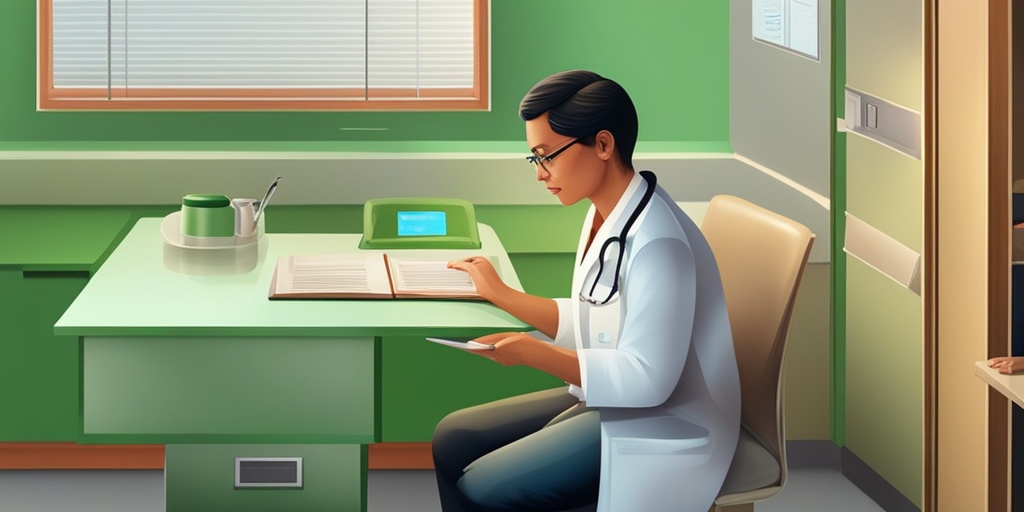What Are Urinary Tract Infections?
Urinary tract infections (UTIs) are a common and often painful infection that affects the urinary system. They occur when bacteria enter the urinary tract and cause an infection in the bladder, kidneys, or urethra. UTIs can affect anyone, regardless of age or gender, but they are more common in women.
What Causes UTIs?
UTIs are typically caused by bacteria that enter the urinary tract through the urethra. The most common bacteria that cause UTIs are Escherichia coli (E. coli), Klebsiella pneumoniae, and Staphylococcus saprophyticus. These bacteria can come from the digestive system, poor hygiene, or sexual intercourse.
How Do UTIs Affect the Body?
UTIs can affect different parts of the urinary system, including the:
- Urinary bladder: This is the most common site of UTIs. Infection of the bladder can cause symptoms such as a strong, persistent urge to urinate, burning sensation while urinating, and frequent urination.
- Kidneys: If the infection spreads to the kidneys, it can cause more severe symptoms such as back pain, nausea, and vomiting.
- Urethra: Infection of the urethra can cause symptoms such as burning sensation while urinating and frequent urination.
UTI Symptoms in Women
UTI symptoms in women can vary depending on the location and severity of the infection. Common symptoms of UTIs in women include:
- Frequent urination: A strong, persistent urge to urinate, even when the bladder is empty.
- Burning sensation while urinating: A painful, burning feeling while urinating.
- Pelvic pain: Pain or discomfort in the lower abdomen, back, or pelvis.
- Cloudy or strong-smelling urine: Urine that appears cloudy or has a strong, unpleasant odor.
- Blood in the urine: Visible blood in the urine or urine that appears pinkish or reddish.
It’s essential to seek medical attention if you experience any of these symptoms, as untreated UTIs can lead to more severe complications, such as kidney damage or sepsis. 🚨
Remember, if you have any questions or concerns about UTIs or any other health topic, you can always consult with a healthcare professional or visit Yesil Health AI for evidence-based health answers. 🤖
Stay tuned for the next part of this article, where we’ll discuss UTI symptoms in men and other important aspects of urinary tract infections! 👍

UTI Symptoms in Men
Urinary tract infections (UTIs) can affect anyone, regardless of gender. However, men are less likely to experience UTIs compared to women. When men do get UTIs, the symptoms can be more severe and may lead to complications if left untreated. So, what are the common UTI symptoms in men?
Frequent and Painful Urination
One of the most common UTI symptoms in men is a strong, persistent urge to urinate, even when the bladder is empty. This can be accompanied by a burning sensation while urinating, which can be very uncomfortable. Men may also experience pain or discomfort in the pelvic area, abdomen, or back.
Cloudy or Strong-Smelling Urine
If you notice that your urine is cloudy, dark, or has a strong, unpleasant odor, it could be a sign of a UTI. This is because bacteria in the urinary tract can cause the urine to appear cloudy or have a foul smell.
Blood in the Urine
In some cases, men with UTIs may notice blood in their urine. This can be a sign of a more severe infection that requires immediate medical attention.
Fever and Chills
A UTI can also cause a fever, which is usually accompanied by chills. This is a sign that the infection is spreading and needs to be treated promptly.
Discharge from the Penis
Some men with UTIs may experience a discharge from the penis, which can be a sign of an underlying infection.
UTI Causes and Risk Factors
Now that we’ve covered the common UTI symptoms in men, let’s talk about what causes these infections and who’s at risk.
Bacterial Infections
UTIs are typically caused by bacterial infections, with E. coli being the most common culprit. Bacteria can enter the urinary tract through the urethra, which is the tube that carries urine out of the body.
Sexual Activity
Sexual activity can increase the risk of UTIs in men, especially if they have multiple sexual partners or engage in unprotected sex. This is because bacteria from the genitals can be introduced into the urinary tract during sexual activity.
Prostate Issues
Men with prostate issues, such as an enlarged prostate or prostatitis, are more likely to develop UTIs. This is because the prostate gland is located near the urinary tract and can compress the urethra, making it easier for bacteria to enter the urinary tract.
Diabetes and Weakened Immune System
Men with diabetes or a weakened immune system are more susceptible to UTIs. This is because their bodies may not be able to fight off bacterial infections as effectively.
Urinary Catheters
Men who use urinary catheters are also at a higher risk of developing UTIs. This is because bacteria can enter the urinary tract through the catheter.
Aging
As men age, their risk of developing UTIs increases. This is because the prostate gland tends to enlarge with age, which can compress the urethra and make it easier for bacteria to enter the urinary tract. 🤕

UTI Diagnosis and Testing
Urinary tract infections (UTIs) can be a real pain – literally! 😓 If you’re experiencing symptoms like burning while peeing, frequent urination, or pelvic pain, you might be wondering how to get a proper diagnosis and start feeling better. In this section, we’ll dive into the world of UTI diagnosis and testing, so you can get the help you need.
What to Expect During a UTI Diagnosis
When you visit your healthcare provider with UTI symptoms, they’ll typically start by asking you a series of questions about your symptoms, medical history, and lifestyle. Be prepared to discuss:
- When your symptoms started and how long you’ve been experiencing them
- The severity of your symptoms, such as how often you’re urinating or the level of pain you’re feeling
- Any previous UTIs or other urinary tract issues you’ve had
- Any medications you’re currently taking, including birth control or antibiotics
- Your sexual history, including any new sexual partners or changes in your sexual activity
Next, your healthcare provider will perform a physical exam to check for any signs of infection, such as tenderness in your lower abdomen or back.
UTI Testing Options
To confirm a UTI diagnosis, your healthcare provider may use one or more of the following testing options:
- Urinalysis: This involves analyzing a sample of your urine to look for signs of infection, such as bacteria, blood, or white blood cells.
- Urine Culture: This test involves growing bacteria from a urine sample to identify the specific type of bacteria causing the infection.
- CT Scan or Ultrasound: In some cases, imaging tests may be used to rule out other conditions that could be causing your symptoms, such as kidney stones or a blockage in the urinary tract.
It’s essential to get a proper diagnosis, as UTIs can lead to more severe complications if left untreated, such as kidney damage or sepsis. 🚨
UTI Treatment Options
Now that we’ve covered UTI diagnosis and testing, let’s talk about the good stuff – getting treatment and feeling better! 💊
Antibiotics: The Most Common UTI Treatment
For most UTIs, antibiotics are the go-to treatment. The type and duration of antibiotics will depend on the severity of your infection, the type of bacteria causing it, and your overall health. Some common antibiotics used to treat UTIs include:
- Trimethoprim-sulfamethoxazole (Bactrim, Septra)
- Amoxicillin (Amoxil, Augmentin)
- Ciprofloxacin (Cipro)
- Nitrofurantoin (Macrobid)
It’s crucial to take your antibiotics exactly as directed and finish the full course, even if you start feeling better before completing the medication. This will help ensure that the infection is fully cleared and reduce the risk of antibiotic resistance. 💪
Home Remedies and Lifestyle Changes
In addition to antibiotics, there are some home remedies and lifestyle changes that can help alleviate UTI symptoms and prevent future infections:
- Stay hydrated by drinking plenty of water 💧
- Urinate when you feel the need, rather than holding it in
- Wipe from front to back to prevent bacteria from entering the urethra
- Avoid certain foods that can irritate the bladder, such as spicy or acidic foods
- Consider taking cranberry supplements or drinking cranberry juice to help prevent UTIs
By combining antibiotics with these home remedies and lifestyle changes, you can get back to feeling your best in no time! 🌞

Home Remedies for UTI Relief
Urinary tract infections (UTIs) can be a real pain – literally! 😓 While antibiotics are often necessary to clear up the infection, there are some home remedies that can help alleviate symptoms and provide relief. Here are some of the most effective ones:
Stay Hydrated
Drinking plenty of water is essential to help flush out bacteria from your urinary tract. Aim for at least 8-10 glasses of water a day, and consider increasing your intake if you’re experiencing frequent urination. 💧
Heat Therapy
Applying heat to your lower abdomen may help soothe the pain and discomfort associated with UTIs. You can use a warm heating pad or a hot water bottle wrapped in a towel. Be careful not to apply too much heat, as this can irritate the skin. ❄️
Urinate When You Need To
Holding in urine can exacerbate UTI symptoms, so make sure to urinate when you feel the need. This can help reduce the risk of bacteria multiplying in your urinary tract. 🚽
Cranberry Juice
Cranberry juice has been a long-standing remedy for UTIs, and for good reason! The antioxidants and compounds in cranberry juice may help prevent bacteria from adhering to the bladder walls, reducing the risk of infection. However, it’s essential to choose a sugar-free, unsweetened cranberry juice to reap the benefits. 🍊
Probiotics
Probiotics are beneficial bacteria that can help maintain a healthy balance of gut flora. Some studies suggest that probiotics may help prevent UTIs by reducing the growth of harmful bacteria. You can find probiotics in foods like yogurt, kefir, or take a probiotic supplement. 🍿
UTI Prevention Strategies
While home remedies can provide relief, preventing UTIs from occurring in the first place is always the best approach. Here are some strategies to help you reduce your risk of getting a UTI:
Practice Good Hygiene
Wiping from front to back, especially after using the bathroom, can help prevent bacteria from entering the urethra. Additionally, washing your hands before and after handling food can reduce the risk of bacterial transmission. 🚿
Urinate After Sex
Urinating after sex can help flush out bacteria that may have entered the urinary tract during intercourse. This is especially important for women, as the urethra is shorter and more prone to bacterial entry. 💏
Avoid Irritating Products
Certain products, such as scented soaps, douches, and powders, can irritate the urinary tract and increase the risk of UTIs. Opt for gentle, fragrance-free products instead. 🚮
Wear Breathable Clothing
Tight, synthetic clothing can trap moisture and create an ideal environment for bacterial growth. Wearing loose, breathable clothing, especially in the genital area, can help reduce the risk of UTIs. 👖
Stay Active
Regular physical activity can help improve circulation and reduce the risk of UTIs. Aim for at least 30 minutes of moderate-intensity exercise per day. 🏋️♀️
By incorporating these home remedies and prevention strategies into your daily routine, you can reduce your risk of getting a UTI and alleviate symptoms if you do get infected. Remember to always consult with your healthcare provider if you suspect you have a UTI, as antibiotics may be necessary to clear up the infection. 💊

Frequently Asked Questions about Urinary Tract Infections
What are Urinary Tract Infections?
Urinary tract infections (UTIs) occur when bacteria enter the urinary tract and cause infection. The urinary tract includes the kidneys, ureters, bladder, and urethra.
What are the Symptoms of Urinary Tract Infections?
Common symptoms of UTIs include:
- Burning sensation while urinating
- Frequent urination
- Urgent need to urinate
- Cloudy or strong-smelling urine
- Pain in the lower abdomen or back
- Fever
Who is at Risk of Getting Urinary Tract Infections?
Anyone can get a UTI, but some people are more at risk, including:
- Women, especially those who are pregnant or have gone through menopause
- Men with enlarged prostate or other prostate issues
- Older adults
- People with diabetes or kidney stones
- Those who use catheters or have a weakened immune system
How are Urinary Tract Infections Diagnosed?
UTIs are typically diagnosed with a urine test, which can detect bacteria in the urine. In some cases, a doctor may also perform a physical exam or take a medical history to rule out other conditions.
How are Urinary Tract Infections Treated?
UTIs are usually treated with antibiotics, which can help clear up the infection. It’s essential to finish the full course of antibiotics, even if symptoms improve before finishing the medication.
Can Urinary Tract Infections be Prevented?
Yes, there are several ways to reduce the risk of getting a UTI:
- Drink plenty of water to help flush out bacteria
- Urinate when you feel the need, rather than holding it in
- Wipe from front to back to prevent bacteria from entering the urethra
- Avoid using scented soaps or douches, which can irritate the urethra
- Urinate after sex to help flush out bacteria
What are the Complications of Untreated Urinary Tract Infections?
If left untreated, UTIs can lead to more severe complications, including:
- Kidney damage or failure
- Recurrent UTIs
- Sepsis, a life-threatening condition
- Pregnancy complications, such as preterm labor or low birth weight
Can Cranberries Help Prevent Urinary Tract Infections?
Cranberries have been shown to help prevent UTIs by preventing bacteria from adhering to the bladder and urinary tract walls. However, more research is needed to confirm their effectiveness.
Can Probiotics Help Prevent Urinary Tract Infections?
Some studies suggest that probiotics may help prevent UTIs by promoting a healthy balance of bacteria in the urinary tract. However, more research is needed to confirm their effectiveness.
What are the Differences in Urinary Tract Infections in Men and Women?
While UTIs can affect both men and women, there are some key differences:
- Men are less likely to get UTIs, but are more likely to experience complications
- Women are more prone to UTIs due to their shorter urethra, which makes it easier for bacteria to reach the bladder
How do Urinary Tract Infections Affect Older Adults?
Older adults are more susceptible to UTIs due to age-related changes in the urinary tract and immune system. UTIs can also increase the risk of dementia and other cognitive impairments in older adults.
Can Urinary Tract Infections be Passed from Person to Person?
No, UTIs are not contagious and cannot be passed from person to person.
Can Urinary Tract Infections be Treated at Home?
While some UTIs can be treated at home with antibiotics, it’s essential to consult a doctor to get a proper diagnosis and treatment plan. Untreated UTIs can lead to more severe complications.
How Long does it Take to Recover from a Urinary Tract Infection?
Most people can recover from a UTI within 2-3 days of starting antibiotics. However, it’s essential to finish the full course of medication to ensure the infection is fully cleared.
Can Urinary Tract Infections Recur?
Yes, UTIs can recur, especially in people who are prone to them. It’s essential to take steps to prevent UTIs, such as drinking plenty of water and urinating when you feel the need.
What are the Best Foods to Eat to Prevent Urinary Tract Infections?
Foods that can help prevent UTIs include:
- Cranberries, which contain compounds that help prevent bacteria from adhering to the bladder and urinary tract walls
- Blueberries, which have similar properties to cranberries
- Yogurt, which contains probiotics that can help promote a healthy balance of bacteria in the urinary tract
- Leafy greens, which are rich in antioxidants and can help reduce inflammation
What are the Worst Foods to Eat if You Have a Urinary Tract Infection?
Foods that can exacerbate UTIs include:
- Sugary drinks, which can irritate the bladder and worsen symptoms
- Spicy foods, which can irritate the bladder and worsen symptoms
- Caffeine, which can increase urine production and worsen symptoms
- Alcohol, which can increase urine production and worsen symptoms
Can Urinary Tract Infections be Prevented in Dogs and Cats?
Yes, UTIs can be prevented in dogs and cats by:
- Providing plenty of fresh water to help flush out bacteria
- Feeding a balanced diet that helps maintain a healthy urinary tract
- Encouraging regular urination to help prevent bacteria from accumulating in the bladder
What are the Symptoms of Urinary Tract Infections in Dogs and Cats?
Common symptoms of UTIs in dogs and cats include:
- Frequent urination
- Accidents in the house
- Straining to urinate
- Cloudy or strong-smelling urine
- Painful urination
How are Urinary Tract Infections Treated in Dogs and Cats?
UTIs in dogs and cats are typically treated with antibiotics, which can help clear up the infection. It’s essential to work with a veterinarian to get a proper diagnosis and treatment plan.




